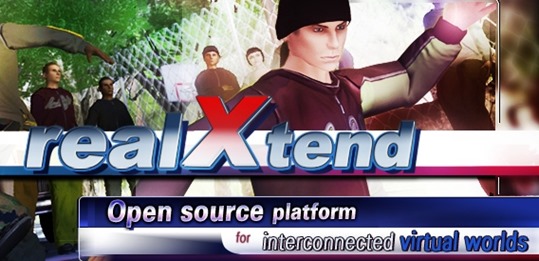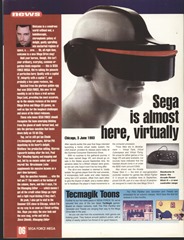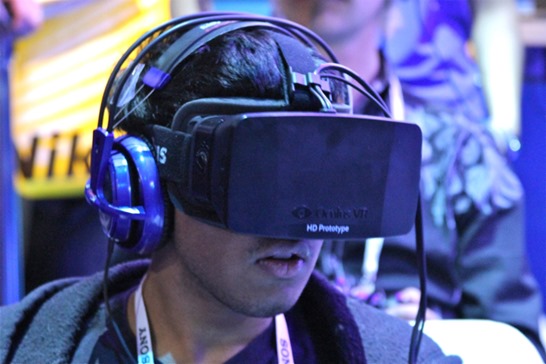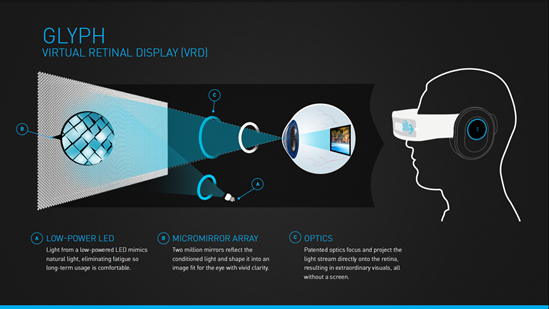If #LindenLab reads nothing else, let it be this.
In tonight’s post, I’m going to put aside the frivolity for a bit and seriously address a situation that is of utmost importance. In a rare moment of sobriety and clarity (referring to my often chaotic musings and not alcohol), I’d like to make a serious appeal to the board of directors at Linden Lab.
I don’t do this often, and what I am about to outline will be at length and quite possibly the single most important thing they could read at this time. In all likelihood, this moment will decide the future of Linden Lab as a whole.
If there is anyone reading this that can put this in front of them, I would highly suggest making that happen if you care about what is going to transpire.
Let’s Begin
Ok, so over the past twenty or so years I’ve had a lot to say concerning the state and direction of virtual worlds. This goes back to before Linden Lab was around and back into the early days of virtual worlds. Starting as far back as Active Worlds in 1995/96 in relation to Worlds Inc when I stated that they (Thom at Worlds) had made possibly the worst decision of his life in choosing Gamma tech over Alpha tech (which was absolutely spot on if you look at the current state of Worlds inc), and then later by outlining what ActiveWorlds would need to do in order to save themselves from going under.
The latter was (not surprisingly) completely ignored and ridiculed at the time because they asserted that they knew better. But (like clockwork) seven years later they have quietly enacted every single bullet point I had written right down to making citizenships there free and shifting focus to user generated content and microtransactions – if not in a manner that missed the point.
However, a lot of my recommendations were time sensitive and were meant to be enacted within the 12 month window they were written in order to remain relevant. Enacting them seven years later really didn’t do them any good.
 Much the same can be said when I was brought in for the same purpose to come up with a trend forecast and bullet points for Atari to follow back in 2008ish. There was an ongoing problem that stretched up to corporate (a situation I like to refer to as a ship that leaks from the top) and it was likely to tear the company apart and bankrupt them. A friend of mine who worked there had a brilliant idea about how he could get me in a position to where the executives would see what I had to say, but could not be effectively fired because they didn’t like what I had to say.
Much the same can be said when I was brought in for the same purpose to come up with a trend forecast and bullet points for Atari to follow back in 2008ish. There was an ongoing problem that stretched up to corporate (a situation I like to refer to as a ship that leaks from the top) and it was likely to tear the company apart and bankrupt them. A friend of mine who worked there had a brilliant idea about how he could get me in a position to where the executives would see what I had to say, but could not be effectively fired because they didn’t like what I had to say.
Essentially he set up an anonymous forum strictly for Atari employees, and locked it behind a password with private invitation. In my email, I had received the invitation along with the entire Atari staff to come in and assess the damages and make a trend forecast. The email that I received differed from the rest of the Atari employees in that I was being asked explicitly address the trend forecast and advise on how to avert disaster whereas the Atari employees were being asked to talk about what they thought was wrong with the company and tell their story about what motivated them to work for Atari to begin with.
My job was simply to assess all of that, interact normally, get qualifying information to further understand the situation, and then make recommendations in that same forum for how to fix the situation (while also pointing out where other thoughts on the future might run them aground). Essentially, he just wanted the voice of reason to make it to the executive level and this is the only way he knew how.
The one thing I’ve taken away from many years of dealing with corporate level executives is that they don’t like being wrong and will do just about everything in their power to play it off or bury any opposing voices – surrounding themselves with people who stroke their ego (sound familiar with Linden Lab?). They tend to like a sterile environment where there is no hint of opposing thought, and instead just a bunch of people agreeing with them.
Well, during my time interacting with Atari, I had mentioned that a game they were pouring themselves into (A reboot of Alone in the Dark) would likely cause negative backlash and untold damages to both their reputation and bottom line if they continued with it as they were. This blow would likely put them in a very precarious position and in jeopardy.
Atari isn’t exactly a name that you think of any longer when it comes to quality or amazing games, and so releasing a game that would further undermine them would be something they likely couldn’t weather.
In typical fashion, they (predictably) ignored what I had said and continued on. Within a month, a German gaming magazine (4Play) had gotten their hands on the pre-release of the game, played it, and reviewed it publicly with the final verdict being a one star rating and the recommendation never to buy it. Just as simply, other non-biased review sites were also giving the game very poor reviews and Atari was immediately in damage control mode facing a total flop before it ever reached store shelves.
This absolutely crushed Atari at the time because they were riding just about everything on that franchise reboot, and they had to effectively go back and redo most of the game in the 11th hour. Atari threatened legal action, and absolutely lost their minds about this because their practice (to this day) includes only giving pre-release copies of games to reviewers who will only talk positively about it and give it a good rating. Essentially this means that gaming magazines aren’t giving you an honest review when they tell you about new and upcoming games before they are released. You may never know the absolute widespread panic that ensued at the corporate level at that point and how heads began to roll. Alone in the Dark as a franchise reboot was met with mixed reviews at best when it finally did see the light of day (legitimately).
Essentially, Atari attempted to bribe and leverage favoritism to ensure releasing a AAA hit instead of actually making a good game, and it backfired miserably. I also calmly informed them that I told them it would happen.
I hope you can see the parallel here between what a game company does and what has happened with Second Life and Linden Lab. Giving perks and favoritism only to people who will talk positively in public, while black-listing or shutting out those who have honest criticisms?
Atari as a company staggered along limping for the next few years as a result, perpetually on the brink of collapse.
Ironically, the game they had pinned their future on left them in the self-fulfilling namesake: Alone... in the dark.
One of the other recommendations I had left for them was that due to the state of the company at the time, it would be in their best interest to get a visionary back in charge to properly navigate the waters ahead. What they lacked was somebody who had an idea about what the company was about, what it stood for, and at the very least could instill a sense of confidence in the team working there again and in the community that supported the Atari name. (Sound familiar?)
This was during a time when most people outside of Atari were unaware that they were dangerously close to being delisted from the stock exchange which would have triggered their parent company Infogrames in France to swallow them up to recoup the costs. In short, the Atari you know today damned near didn’t exist because the executives bet it all on a franchise reboot that flopped.
I was advising at a time when the situation was indeed dire, and Atari needed a miracle to turn it around.
The guy who brought me in believed that I was that miracle.
My recommendation was to get Nolan Bushnell back at the top and pick an abstract IP that they owned (a well known one) for a reboot. To make sure that the reboot was imaginative and engaging – everything that Alone in the Dark turned out not to be. This was to be their Hail Mary play and they absolutely needed to hit it out of the ballpark. Their very existence rode on this.
At the time, the executives didn’t want to hear this and instead (as it turns out) they went on a massive firing spree trying to eliminate all of the employees that were in the private forum discussing all of this – the purpose originally was to allow disgruntled employees (which was like... most of them) to vent or discuss what they saw in Atari and what they thought was the future of the company. It was an attempt by a very brilliant man who worked there to allow an honest and open discussion for the benefit of a company and brand that he loved.
Even with anonymity, the executives still found a way to track it back to the individuals and then fire them all.
Except for me.
Which originally was the point in including me in that group, because he knew that if the executives went on a firing spree they’d still not be able to fire me and that meant that I’d still be telling them what they needed to hear whether they liked it or not.
What transpired was predictable, and I’m actually quite used to this response by now. The executives at Atari continued as-is doing whatever it was that they originally were doing, because they couldn’t possibly be wrong, discarding the sound advice and trend forecast I had left them despite that fact that I had already proven that I was right with Alone in the Dark (among other things).
After that tenure, I continued on in virtual worlds without giving it much thought and to this day I stay in contact with the guy who worked at Atari (though he has moved on to his own games company).
About 3-4 years later, I got a report from a friend who is a writer for a bigger gaming magazine asking if I had heard the news about Atari. I didn’t tell anyone about that tenure at Atari save for him in order to have on record my involvement and what I had said to them (I had given him access to the forums so he could see for himself what I had actually said). He was also the guy that gave me the heads up about the German gaming magazine long before it got back to Atari corporate ears. But four years later... I get a report from him saying that Atari had indeed gotten Nolan Bushnell back at the top of Atari as part of their board of directors and that (not surprisingly) they were doing a reboot of an imaginative franchise IP (YARS Revenge).
So I had been absolutely right all along, and I effectively saved Atari. Though you’re more likely to hear about how brilliant the executives were in that proceeding than a snowball chance in hell of them admitting otherwise. Just like how ActiveWorlds will claim credit for their recent changes and reorganization while quietly sweeping the fact that they are following my playbook to a tee (albeit seven years too late).
This is the normal lifecycle of what I usually say versus how long it takes for somebody to actually accept and do it in the industry. Usually it takes being on the absolute brink of ruin and having no other option but to try “whatever that one guy said...” as a final resort. They panic and go back through the documents to see what I had originally said (that they ignored) in order to get their asses out of a sling. Most of the time it’s through gritted teeth because what I usually say isn’t sugar coated and it often isn’t something they are willing to listen to because it flies in the face of what they are already doing (ie: their ego gets in the way).
When BlueMars began, everyone was talking about it like the next big thing and even Second Life developers were jumping ship to go over there to create stuff. My initial impression was that BlueMars would effectively go bankrupt because the current business model and manner of doing things was unsustainable.
I talked to Glenn at AvatarReality early on about this, citing that BlueMars was mimicking the original Worlds Inc model of virtual world with higher end graphics, but that historically it would mean that BlueMars would effectively go under and become a bottom feeder as a shadow of its former self. Just like Worlds Inc did.
He smiled and assured me that they were doing fantastic and that I was totally wrong in my forecast.
And then BlueMars effectively collapsed.
Over half the staff was laid off including the then CEO. BlueMars (with what was left) focused on being a mobile virtual world that was a shadow of its former self.
When everyone was jumping on board with Cloud Party and trumping it up as the next big thing, I stood back and said the same things. That it wasn’t the long term solution and not to get too invested in it. I’ve been laughed at for that and relegated to the wayside, but the proof is in the pudding... Yahoo acquired Cloud Party recently and plan to shut it down.
So call me the Canary in the Mine.
I’ve done the same thing for twenty years now (give or take), and have effectively called the future of each virtual environment system (and even a major game company) with a near 100% accuracy. For what it’s worth, no matter how many times people balk and dismiss what I say, the proof comes in the pudding later on.
Being a trend forecaster isn’t about appeasing people or telling them what they want to hear. It isn’t about trying to shoehorn a biased agenda into the mix for self-serving purposes. It’s not about trying to spin the situation or cast a light only on the good things while sweeping all the rest under a rug. It’s about being willing to take a long and honest look at the situation in order to come up with the probability of what would happen given the circumstances, and then figuring out how to make that probability the most favorable to the company involved.
More often than not, that means you have to be willing to swallow your ego and accept that you’ve royally screwed up before you drag everything down and sink the ship. There are countless people on the Titanic right now, and it’s not brave or intelligent to sink the ship... there aren’t enough lifeboats.
As history shows, this is often something that flies in the face of what executives want to hear because they are so fully invested in their viewpoint, and this is the root of the problem.
Regarding Linden Lab
Now that I’ve set up the precedence for this open letter, let me continue by saying that in no way do I have it out for Rodvik Humble. Nor did I have it out for Mark Kingdon or Philip Rosedale.
What I’ve said (albeit harshly) over the years is that none of them were a proper fit for Linden Lab to lead it, and for very obvious reasons. Or at least it should have been obvious at the time... but painfully wasn’t.
It’s easy to make these observations in hindsight, because hindsight is 20/20, but the take-away going forward is that I made these observations before they happened and to great criticism at the time.
Philip Rosedale
 In respect to Philip Rosedale, he is a wonderful salesman with the ability to elevate a vision to an illusion (delusion) of grandeur. He can see (albeit after the fact) where a Metaverse system will go, but not because he has a vision... it’s because he’s reading the writing on the wall from the community and through statements in research. Those statements have been taken out of context and applied in a manner that were not meant to be applied in a fractured manner.
In respect to Philip Rosedale, he is a wonderful salesman with the ability to elevate a vision to an illusion (delusion) of grandeur. He can see (albeit after the fact) where a Metaverse system will go, but not because he has a vision... it’s because he’s reading the writing on the wall from the community and through statements in research. Those statements have been taken out of context and applied in a manner that were not meant to be applied in a fractured manner.
He has just enough suave and “cool” factor to convince you that your own ideas are his own and sell them back to you as a vision statement, presenting the air of authority on the topic at hand.
Being an excellent salesman, he can effectively take an igloo and turn it into the must-have for Eskimos, even if he got the idea from the Eskimos to begin with and are telling them what he thinks they want to hear. This is known simply as having a cult of personality.
That sums up his tenure at Linden Lab and now with highfidelity.
And believe me, when I say that highfidelity isn’t going to be a magic bullet or a resurgence in virtual worlds any more than Oculus Rift. It has a lot of interesting ideas but ultimately will suffer just the same as BlueMars. If you’ve read up until this point, you should understand that this isn’t simply speculation on my part but coming from a very sound background of accuracy.
What Philip is essentially good at is jumping on a bandwagon and convincing everyone else that he thought of it – even when the people he is convincing are the people who originally thought it up. This makes him less of a visionary leader and more of an effective follower who can convince others he is on the forefront.
In the context of Linden Lab or any other company, this strategy of being a business chameleon only works for so long before the illusion falls apart. You can only bullshit people for so long before you have to make an honest decision of your own.
Mark Kingdon
 We can surmise that Philip is a business chameleon because of the next choice for CEO, Mark Kingdon, who was perceived as a man who was capable of making actual business decisions on a corporate level.
We can surmise that Philip is a business chameleon because of the next choice for CEO, Mark Kingdon, who was perceived as a man who was capable of making actual business decisions on a corporate level.
This man was (and is) capable of making solid decisions when it comes to corporate level strategy, enterprise rollout, etc. This is why he was chosen to replace Philip Rosedale – because he represented (so you thought) all the things that had become apparent that Philip wasn’t actually able to do.
After that smokescreen came down and you saw through it, you realized you needed somebody that was more solid and could approach it as an actual corporate decision process and strategy.
Because, let’s face it, when you are a business chameleon you aren’t anticipating the curve but instead changing your approach and “vision” as the curve is happening or has already happened. This means often well after the fact that such thinking has already become public knowledge. Case in point is OpenSim in and of itself – it wasn’t part of his vision plan and he adjusted his vision after the fact.
Of course, Mark Kingdon would have actually been a great replacement in literally any other situation than Linden Lab. It is really no fault of his own that he failed so miserably at being CEO of Linden Lab because he came to the position with a solid business and corporate background and a love of the arts.
To somebody who isn’t knowledgeable about a Metaverse system, you would see this guy as the perfect fit. This is what happens when you only think you know about a Metaverse or erroneously proclaim that you “get” it.
This leads us to Rodvik Humble by way of Philip Rosedale (again).
Philip during this transition was simply there to babysit the company and try to keep the kids from rioting. After Viewer 2 and everything else, the situation was a powder keg ready to go off. Being a chameleon, Philip is effective at portraying what he thinks the community wants and embodies that notion as “one of you”.
This is exactly the sort of skill that the board needed at the time, and so Philip kept the community quiet long enough for the board to court what they thought was now a perfect match for CEO of Linden Lab.
Rod Humble
 Which brings us to Rodvik Humble.
Which brings us to Rodvik Humble.
From the beginning, I made no bones about it – Rodvik Humble was a bad choice for Linden Lab. You can look back through this blog to see every time I pointed it out very blatantly and had given the reasoning very soundly.
I’m no stranger to people thinking I’m off my rocker or somehow that my credibility doesn’t hold up. It’s a common reply whenever this stuff comes up and it holds about as much water as dish strainer. Especially if you look at my actual track record.
In the grand scheme of things, you had already gone with a corporate strategy and enterprise solution, and it flopped. So this time around you thought you figured it out and went in the total opposite direction, getting Rodvik Humble on board to lead the company forward (with Will Wright).
If the enterprise solutions strategy didn’t work, then Linden Lab must be a games company – and who better to run a games company than a former VP of Electronic Arts, one of the largest game publishers on Earth? SimCity, SPORE, and so many recognizable games came out of EA that this guy absolutely had to be a shoe-in for the position.
You thought you were going back to the roots of Linden Lab as a game company, and building from there (since Second Life started out as a game before it transitioned into an open-ended virtual environment platform).
But being investors and business types, you very well didn’t know that among gamers, Electronic Arts may as well be the most hated company on Earth. They may as well be the Antichrist of gaming. Their business strategy includes disdain and contempt for their customers, isolationism, totalitarian control over all IP related materials, vendor lock-in, and deliberately screwing over their customers any chance they get.
This is the playbook you bet Linden Lab on.
It is no surprise that all of this manifested during Rodvik Humble’s tenure, and I said it would the day he took the position.
You essentially hired the wolf to care for the sheep with this one.
It was very obvious from the get-go that Rodvik did not actually “get” Second Life. If he did, he would not have tried to make Linden Lab into familiar surroundings from Electronic Arts. In doing this, he tipped his hand and effectively announced (to those who were paying attention) that he was more comfortable addressing Linden Lab as a video game company and diversifying into a realm that was not his flagship product. When he couldn’t immediately make Second Life into his game company (Linden Realms, et al) he decided to move outside of Second Life to achieve his game company under controlled circumstances.
When Rodvik Humble looked at Second Life, this is what he saw:
However, while Rodvik saw a Prim and Plumbob – I see the salvation of Second Life and Linden Lab in the same picture. (It’s not the Plumbob)
If anything, this should have been your wake-up call that he had effectively failed to do what you needed him to do. He was admitting defeat with this maneuver, and relegating the flagship product to the back-burner while he focused on everything except the flagship product.
Every time he attempted to touch Second Life, he essentially came back with his tail between his legs. From a marketing and promotional perspective, creating packages for Amazon.com to sell, creating a balkanized social media in-house for Second Life (SL Stream – though that could have been Mark’s doing), and ultimately trying to lump Second Life into the gaming side of the company by making a one size fits all Terms of Service.
In that he painted it as “creative spaces” was simply superficial at best in order to make what he was doing seem (on the surface) relevant to the whole.
Anything else that happened during his tenure at Linden Lab was a by-product of things that were likely to exist with or without him as obvious steps forward, and the rest is relegated to a typical EA playbook of control, balkanization and gaming.
It is no revelation to have Oculus Rift support in a virtual world. With or without him, any competent CEO would have done the same. It is no revelation that Mesh was incorporated into Second Life, since mesh is a staple of virtual worlds and gaming since the beginning of time – Second Life was simply the last to get the memo. Even in so much as Normal Maps and Specular Maps, these are again a staple of gaming and virtual environments and so a logical and obvious thing to have incorporated, and that a programmer in the community brought it up and championed it is quite telling.
Well before even realXtend was adding mesh support in an OpenSim derivative, other virtual worlds already had mesh by default dating back to the 1990s. It’s not as big of a deal as it was made out to be, but really it was a way to spin the fact that Second Life was the last one to the party as if it they were innovating.
Even when we look at Mesh Rigging, we get an idea of the depth at which he actually understood what Second Life was about, being that he did not anticipate that mesh would be used for clothing and attachments and that it needed a reasonable way to adjust to the variations of the user generated environment.
This was an afterthought, and dragged out far longer than it ever should have after the fact, when instead this should have been written on the whiteboard to address while mesh was in development and long before it was released. But it took a community backlash and effort to get the topic on the table by raising the funds to just go ahead and code a solution when Linden Lab was trying to sweep it under the rug, until finally yet another community member employed a rigging hack called Liquid Mesh to solve the problem and Linden Lab (partly due to politics and partly because Liquid mesh was quicker to implement) chose that instead.
I won’t debate which solution was better, because there are plenty of pros and cons to each side. To debate it would miss the bigger picture that it was the community who was fed up with Linden Lab and their gerrymandering that implemented two possible solutions while Linden Lab didn’t even think it was a concern at all to fix.
In the end, Rodvik Humble was thinking like a games executive, from the Electronic Arts school of thought. This is who you hired to set a course for a Metaverse company, and the results are now in. An Electronic Arts executive is effectively trained in trying to control a community instead of actually participate or work with them effectively.
This is why a majority of the new “Premium” benefits were simply pre-existing community services or offerings with a Linden Lab sticker on it. This is the opposite of the number one rule of virtual environments as written by Chip Morningstar and Randy Farmer in 1991 entitled Lessons Learned from Lucasfilm’s Habitat:
Work within the system.
I’ll come back to Chip Morningstar and Randy Farmer later on, because they actually played a significant role in Linden Lab history and are relevant going forward.
When you are a games executive, this rule flies in direct opposition to how you are trained to do things. Instead, you are conditioned to try and control as much of the IP and service as possible, even if you have to start shutting out everything and everyone except those who play by your rules. As a matter of course, every single thing that Rodvik has done since he took the position was in total opposition to the fundamental laws of virtual worlds and effectively flew in direct opposition to actually understanding them.
And now I’ve described the current Second Life community in a nutshell.
On one side you have the “privileged” inner circle who say nothing but good things about Linden Lab, Second Life, and every decision made – trying to spin everything in a positive light just to stay in “the loop” and on their good side.
On the other side you have people like myself who aren’t interested in perpetually being an ass kisser to stay in favor. It’s not a benefit to me to tell anyone only what they want to hear, wearing the rose-colored glasses and drinking Kool-aid, just so they can play favorites and throw me a bone. I’m interested in looking at things critically and honestly, even when it means I have to say something or somebody is a colossal screw-up.
Right up to his announcement for stepping down, which was a confidential message to one of the people in SL (on Facebook) who consistently didn’t make waves and played by his rules alone, he was playing favorites to people who didn’t question him or his actions. This is the class of “privileged” stratification that he endorsed.
A real company, when a CEO steps down, puts out a press release as the first public information. Linden Lab has now garnered a further Mickey Mouse management stigma by allowing such an important and crucial announcement to break in a private Facebook message.
And we wonder why the public perception of Second Life is mixed at best and negative at worst?
Linden Lab suffers from an identity crisis amid an ailing perception of a has-been company that is long past its prime. It is seen as a fad that is trying desperately to be relevant once again as confidence in the company’s future slides downward. This is the beginning of a situation that will historically lead to irrelevance, bottom feeding or bankruptcy.
Just ask Worlds Inc, Active Worlds, BlueMars, There.com, Blaxxun Contact, VPL, VFX, and others.
The company has even gone so far as to attempt riding the gravy train of Oculus Rift to reignite its relevance to the world. In the words of Rodvik himself -
“I don’t want to overhype this but...”
Which is ironic because that’s exactly what he was trying to do in hopes of reigniting interest in Second Life again. It was a Hail Mary play and it bombed. The repercussions of this won’t hit full force until a later time, so I hope you are bracing yourselves.
The one thing Linden Lab has yet to do is effectively and seriously address why it is relevant going forward, create a solid (and knowledgeable) vision for the company based on actual understanding, and regain the trust that the company all but squandered in 2008/2009 and going forward in the initial hype. Oculus Rift isn’t going to save you from doing your job, and a games division is merely a bad attempt at distracting the public.
Moving Forward
Going back to Randy Farmer and Chip Morningstar, this is the take-away -
I’m not vying for a position to be CEO of Linden Lab. Let me make this perfectly clear.
In doing so, I would be grossly underestimating what is actually needed going forward in order to return Linden Lab back to its original status. As a published academic in the field with roughly twenty years in the industry, and provably spot-on as a whole (I even predicted the fallout from Spot-On 3D before Tessa had her meltdown – For the record she said I didn’t know what I was talking about), what I am capable of is merely the following recommendation:
Yes, I’ve given accurate advice to bigger names in the industry and in some manner or another have even saved them from total collapse (when they chose to listen). I absolutely could fill the position in a way that no other CEO could do going forward, because I see the bigger picture and have both the inside and outside view of the situation. I see both the view from inside that bubble as well as outside that bubble clearly with one foot firmly planted in real life just as much as a second life.
But what Linden Lab needs is an advisory board.
Any CEO is only as effective as their knowledge of the subject at hand, and their willingness to listen. Academics aren’t the sort who are prone to being good CEOs, but CEOs in a company like Linden Lab aren’t prone to making informed decisions – and you already can confirm this first hand with the parade of CEOs that have come and gone.
Early in the beginning of Linden Lab, a number of consultants were brought in to assess and give advice for the fledgling company. Of that group there was Randy Farmer who (back in the day) I had the privilege of talking with concerning what had transpired.
When I had asked him if he was a consultant for Linden Lab early on, he did indeed confirm this. When I asked him what happened, since Linden Lab seemingly was ignoring all of the tenants of what he would have told them, he essentially had this to say (and I paraphrase):
“Well, they contracted me to come in and consult and I told them what I knew of the subject at hand. Given it was turning into a virtual environment and less of a game scenario, they wanted to know how to handle that. I told them what I knew (which is substantially a lot) and they kindly thanked me and then did the opposite. It would seem that they only wanted confirmation for the things they already thought they knew, despite that I had given them ample warnings for other things.”
And now you understand where the problem began.
If you want to fix Linden Lab, and bring Second Life back into the mainstream again, what you are going to need is a competent CEO working together with a couple of highly competent academic advisors.
No king can rule without a trusted advisor, and not even the President of the United States goes without a Cabinet. You are no different, and so far you haven’t escaped this reality.
This is where you’ve gone wrong all of these years, Linden Lab. Hiring CEOs who don’t actually know what a Metaverse system is about, and then effectively starving them of capable intelligence to help them understand or allowing them to ignore anything that is contrary to what they believe.
So this is what I actually propose:
Hire a competent CEO, somebody who knows how to run a company the size of Linden Lab and is open to learning the ropes in this exotic situation. You’re not going to find a CEO from existing Metaverse (virtual world) companies because those are far and few between and even their own track records aren’t up to snuff (or else they would have supplanted Second Life already).
Begin by understanding that Linden Lab as of this point is stuck with a gaming division and so, the company needs to have a gaming division and also a Metaverse division. The two are not the same thing, policies cannot be homogenized, and each needs to be addressed very differently. This is my bit of free advice for the moment.
Most importantly, and this is going to be your saving grace, you need to set aside a couple of positions at Linden Lab for advisory board employees. Their job is simply to be the academic and information counterbalance for the vision of Linden Lab going forward. These are the people who are proven in the field and know their stuff inside and out. So when the CEO wants to formulate a move forward, he or she is doing so backed by some of the brightest minds in the industry.
These people aren’t consultants, and they are not subcontractors. They are on the books and bona fide employees of Linden Lab with a singular purpose and job description – to be the think-tank and knowledgebase of your company vision. They are the people who can tell you in advance what each decision and corporate positioning is likely to result in before you do it.
Your advisory board is the window into the future.
This is my recommendation, and my appeal. I do not want to be your CEO because I think other people are far better at it if given an advisory board to work with. That being said, in the unlikely event that you would consider me for your CEO position, I would be up for it just the same because my first action as CEO would be to assemble that advisory board before anything else is done.
If by some fluke of nature, you consider me to fill the position of CEO, you must understand that you will effectively be hiring the virtual worlds equivalent to Steve Jobs. I’m unconventional, driven, and highly intelligent.
From Sherry Hall, President of Pulse Point Media:
So confident am I in his ambitions to set the bar for both organizational modeling and the pioneering of new business communications platforms, that the words “the next Steve Jobs” come to mind.
I suppose the question really remains about whether you’ve reached a point where conventional methods have failed you enough to put somebody like me in charge or if you’re still going to try another “safe bet” when all of your safe bets have failed so far.
Which is why I’m not vying for your CEO position today, because you are predictable and cannot be expected to do something unpredictable. It’s out of your comfort zone, and so I won’t ask you step out of that.
What I am vying for is an official position on that advisory board.
That would be your safest bet going forward. You get to pick whomever you want as a CEO, and you get the benefit of knowing you finally have a body of knowledge and understanding on the team that can empower that CEO accordingly.
While I may be an unconventional choice in this matter, for either CEO or the advisory board, the one thing you can count on is that I am qualified nonetheless by a lightyear. Let’s face it... we both know that right now you are staring down the possibility of another 3-5 years of misdirection and downward slide if you mess this up.
I can’t help you if you aren’t interested in actually letting me.
So let me be your Hiro Protagonist.
Signed,
William Burns
Aeonix Aeon in SL
About Me
LinkedIn: http://www.linkedin.com/in/wgburns/
Contact Information
Email: darianknight at gmail.com
Phone: 1 (973) 500-8814
Skype: darianknight
Am I qualified for the position? You be the judge.
★ Published research in Association for Computing Machinery | June 2013
3D Virtual worlds and the metaverse: Current status and future possibilities
Part of the Virtual Worlds Certificate Course at Washington State University (by request of Randy Heinrichs), and also integral to current PhD research being done at the Nokia Mobile Life Centre in Stockholm. Named the “seminal work on the subject” and unanimously recommended for Paper of the Year.
★ Co-Vice Chair, IEEE Virtual World Standard group P1828
★ Contributor to the Metaverse Roadmap
★ Contributor to Solipsis Decentralized Metaverse
★ Published Academic Author:
The Future of Virtual Worlds in E-Commerce | IGI Global
★ Former VP of Operations for Pulse Point Media
Work including: Operation Kid Equip, Loyola Marymount University in SL, etc
★ Former CTO for VR5 Online
Cy Award, SAW Award, International Flight Festival Award
Currently:
★ Co-Founder for Parallel Worlds with Kevin Simkins.
A total immersion system that transcends virtual environments.
★ Research partnership with Dr. Alan Craig at the University of Illinois Urbana Champaign and the National Center for Super Computing Applications (Blue Waters).
★ Co-founder for the eureka! content discovery system in Second Life
★ Advisory/Design for the on-going game project “Infection”, an innovative Tower Defense game and platformer based on procedural/dynamic content and exploration. “Infection” uses a custom designed 3D graphics engine in-house named BluSkies.
★ Advisory/Consultant for Dmitri at MassageASMR for an upcoming immersion series in autonomous sensory meridian response videos.
Now here’s the real question:
Knowing all of this, will my phone and email remain silent? That’s up to you. Historically speaking, corporate level doesn’t usually talk to me despite how many times I’ve been correct.
As I’ve said time and again to companies far larger than you -
You are free to ignore what I am saying today, but you do so at your own peril. As of this moment, you can’t say I never told you so.
Either way, Linden Lab... you are about to roll the dice. It might be a good idea to stack the deck in your favor this time, wouldn’t you think?





![Prims and Plumbobs_001[9] Prims and Plumbobs_001[9]](http://lh3.ggpht.com/-zEAtYDQGdug/UuYDvbgPlLI/AAAAAAAAVt4/vgXb6s51rEY/Prims%252520and%252520Plumbobs_001%25255B9%25255D_thumb%25255B1%25255D.png?imgmax=800)













